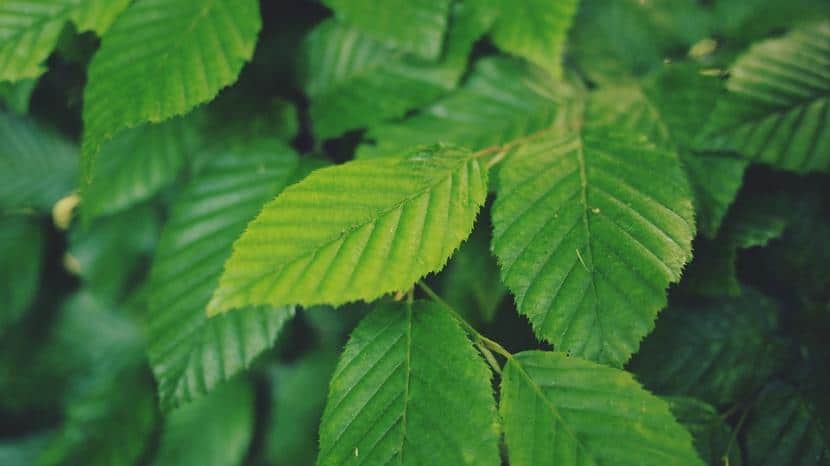
Plants, as we know, each year must face various pests and even some diseases. There are many parasites, fungi and bacteria that want to take advantage of any opportunity they have to attack. This opportunity is presented when there is an inappropriate change in the crop, or a sudden drop / rise in temperatures.
To identify the problem, we will only have to look at how the leaves look. They can help us a lot to know what is affecting the plant. Let's learn to interpret the language of the leaves.
Main pests that affect plants
Red spider
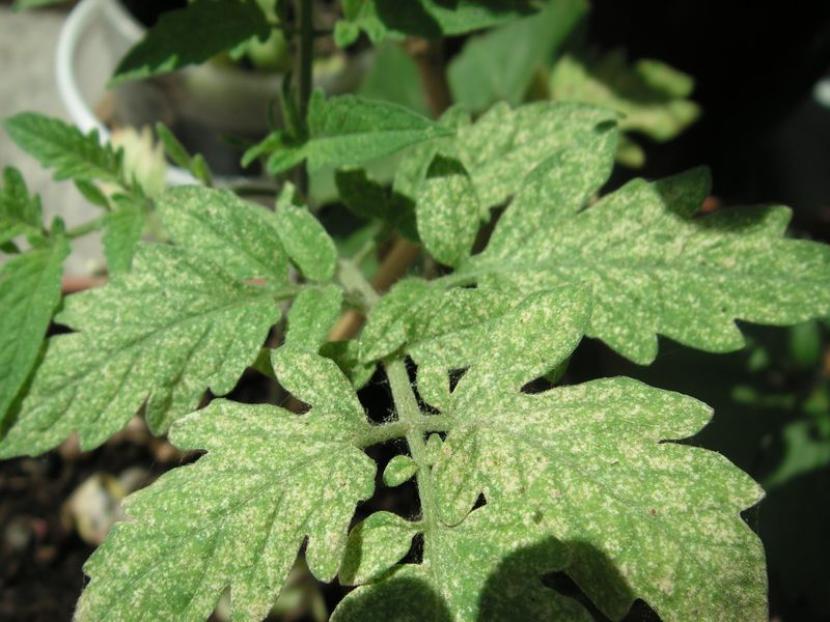
Image - My orchard
The spider mite is a tiny mite of just 0,5 millimeters that perches on the underside of leaves. They can be seen with the help of a magnifying glass, or if you have very good eyesight. On the leaves appear white dots and yellow spots in the bundle, until it ends up drying and falling. It is removed using any miticide, such as Dicofol or Abamectin.
Cochineal
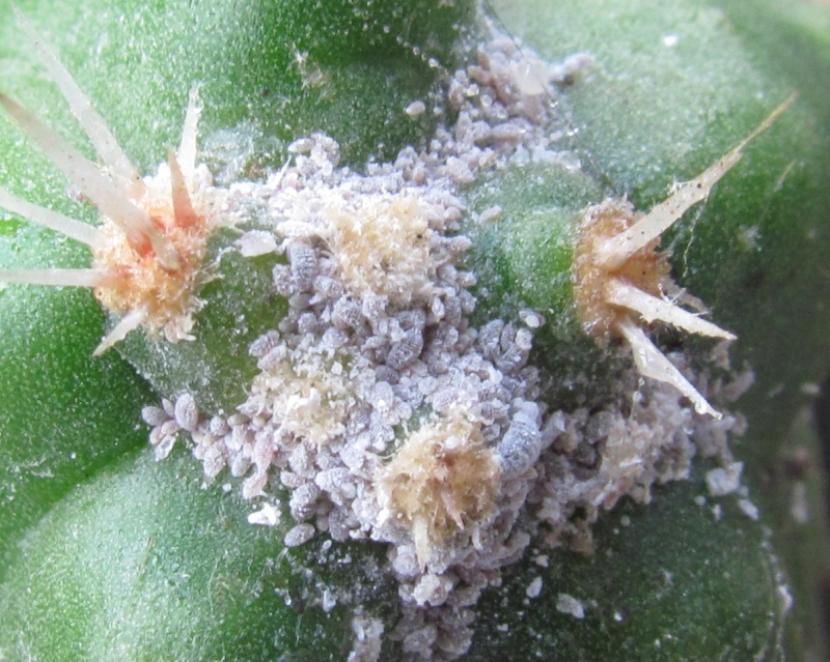
Image - Cactus
Of mealybugs that affect plants, we identify above all two types: the cottony (which is the one you can see in the image above), and the one known as San Jose louse. The former have a cotton-like feel, while the others closely resemble lice.
The symptoms are: discolored, yellow, and deformed leaves. They are removed by moistening a swab from the ears or cotton in methyl alcohol.
Aphid
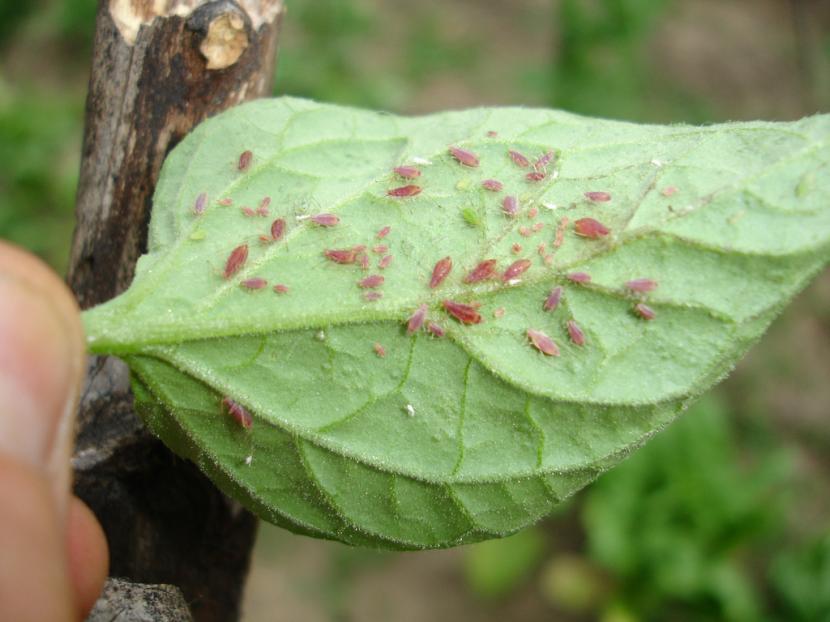
Aphids land on the underside of leaves (especially the youngest ones), stems and also on flower buds. We will know that you have this plague if we see the insect itself, or if they appear yellow or green spots on the sheets. You can eliminate them with any systemic insecticide.
Main plant diseases
Phytophthora
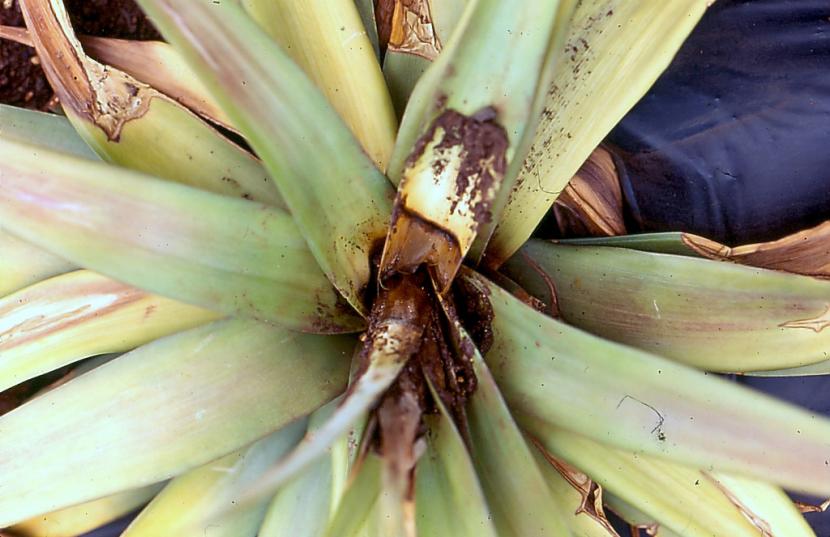
This fungus is one of those that can affect plants the most. Those who have it, its leaves will start to look yellow until they turn brown soon. Most of the time the plant ends up dying from root rot.
You can try to combat it by avoiding excessive risks, and doing treatments with fungicide.
Botrytis
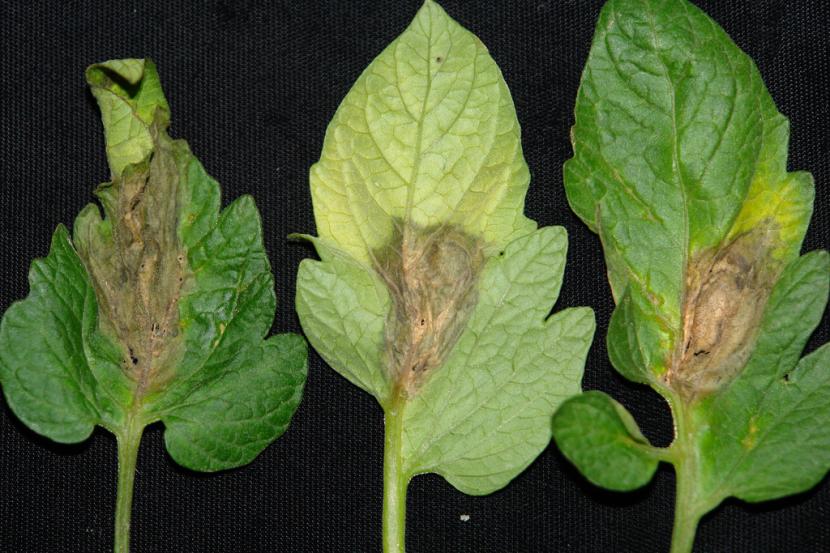
Also called the gray mold fungus, it produces rot in leaves, flowers, fruits ... in short, in all parts of the plant. The treatment must be preventive, controlling the risks and mixing the substrate with a little (about 2 or 3 grams) of sulfur or copper.
Roya
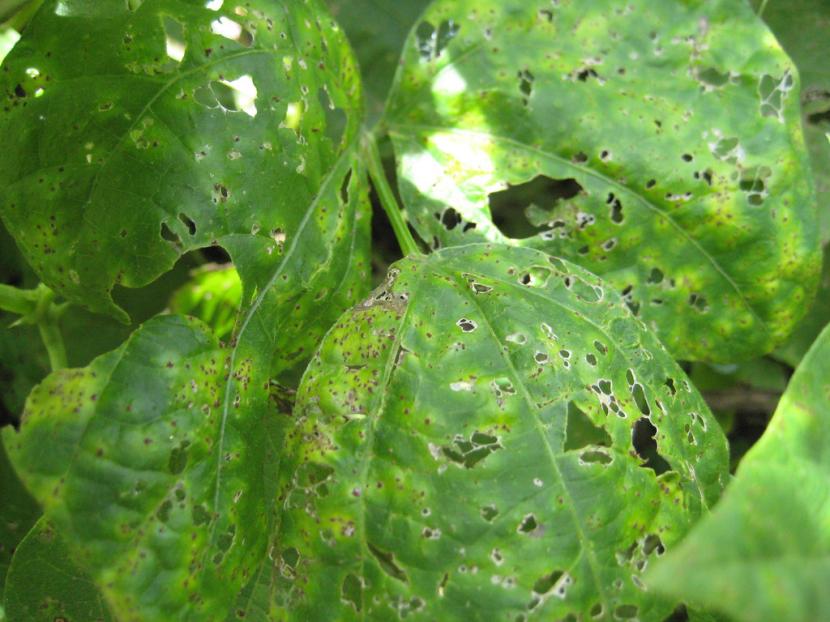
Rust is identified by presenting orange bumps on the underside of the leaves and on the stems, and yellow spots in the beam. It is one of the easiest fungi to control and combat, doing treatments with a fungicide that contains Oxycarboxin.
Pests and diseases can do a lot of damage to your plants. We hope that now it will be easier for you to identify them to be able to eliminate them 🙂.
Excellent help, thanks just what I needed.
I'm glad it was helpful, Mary 🙂.
Good afternoon, first of all I wanted to congratulate you on the newsrooms and councils
The reason why I am writing to you is a series of diseases or conditions that I do not know how to treat. I have bought products in the nurseries but they do not give an adequate result,
1 ° acer palmatum, (I don't know if it is written like that) it began by drying on the leaves I think due to excess water, then I transplanted it to a pot with a lot of capacity, to improve its development, shortly after changing the soil they dried a lot The leaves, from the outside to the inside, began to grow new shoots and the leaves turned black, I water it a little and it is in the morning sun, I am from Mendoza, here the sun rises from the east soft, then in the course of the day it is in the shadow. The prepared earth is 50% with peat and 50% with pomace and other things ... the issue is that I feel that the earth is moisture and does not absorb well or rather that too much moisture is kept in the pot, it is 60m in diameter and is round and a height of 70 cm deep I made 5 holes of 3 cm in the base like a star but never a drop falls to the floor…. It is in a location where permanent air breezes circulate and it breathes ... I do not know its reason ...
2nd dracena rubra (purple) this plant presents as some injuries or discolorations in some leaves and it looks like very drooping, its watering is moderate and it is in permanent sun, I have cut the tips when they were dry and it has remained.
3rd indoor plant, with yellow spots, I do not know the technical name, this little plant presented symptoms similar to Acer, and the shoots also began to come out with the edges and the black leaves…. according to the photos ,,,,
use fungoxan fungicide for fungal pests, mixed with another with one treatment every 15 days. and there is no improvement, I hope I can hit the key ... in advance I appreciate your attention, best regards!
Hello Leonardo.
I answer you in parts:
-Acer palmatum: from what you count, it seems that it is going through the heat. My advice is that you plant it in akadama, pumice, river sand (or similar) and that you water it with acidic water (just dilute the liquid of half a lemon in 1 liter of water). It would also be advisable to pay it with fertilizers rich in iron.
-Dracaena: this plant does not like direct sun much. It is better to have it in semi-shade. This will improve 🙂
-Indoor plant: it may be due to excess watering, but if you can upload an image to tinypic or imageshack, copy the link here and I confirm.
A greeting.
Hello Monica, here I add photos of what happened, I hope it improves with your councils, thank you very much
Leonard!
https://imageshack.com/i/poINKWH9j
https://imageshack.com/i/pnwVV1taj
https://imageshack.com/i/poiIomywj
https://imageshack.com/i/pnRUeSPJj
https://imageshack.com/i/pnrKNwtpj
https://imageshack.com/i/pmKssu1jj
https://imageshack.com/i/pmnCx6Enj
https://imageshack.com/i/poKgxgy2j
https://imageshack.com/i/pnWGNm9bj
https://imageshack.com/i/pocYywstj
Hello Leonardo.
Looking at the photos, I keep the advice I have given you, except for the indoor plant.
This plant has fungi. Fungi appear when the substrate is very wet. They are fought with fungicides but it is also convenient to space out the irrigations.
A greeting.